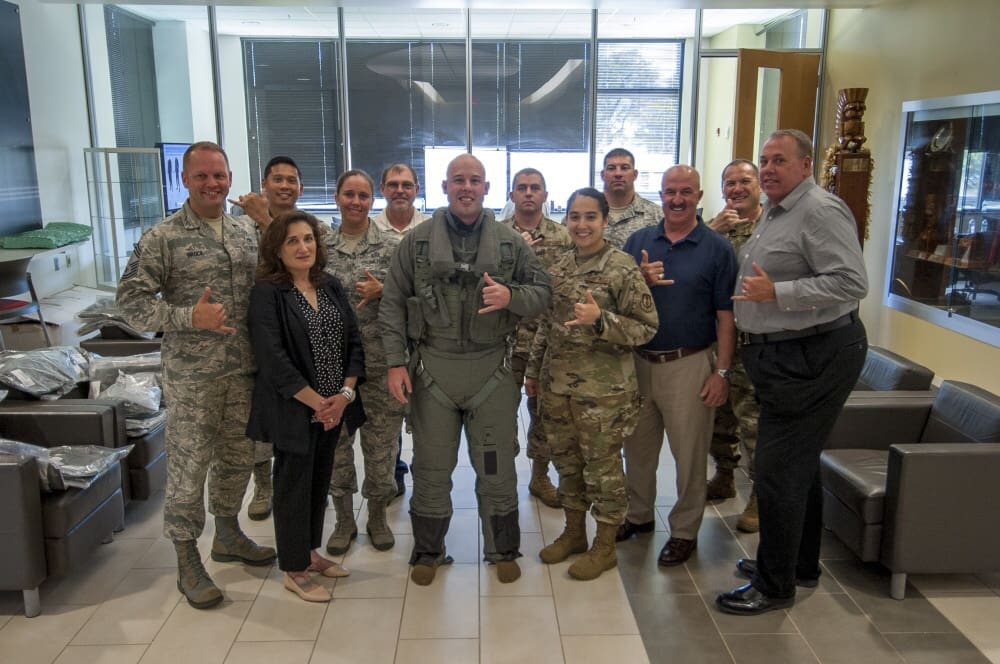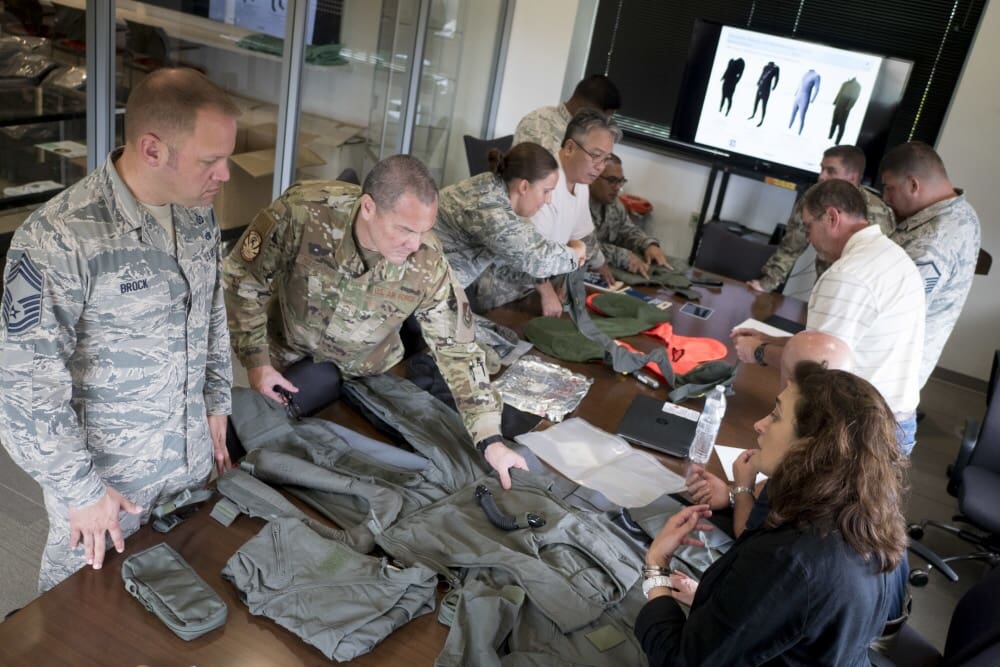Representatives from Wright-Patterson Air Force Base, Ohio, visited Joint Base Pearl Harbor-Hickam July 8-12 to introduce fighter pilots and aircrew flight equipment professionals to some of the newest developments in flight-suit technology.

Team Hickam’s Hawaiian Raptors, comprised of members from the 199th and 19th Fighter Squadrons, have been selected to be the first aircraft operators to bring the gear, called the Integrated Aircrew Ensemble, into an operational capacity.
The visiting project managers from the Human Systems Program Office provided demonstrations, fittings and on-the-job training to F-22 Raptor pilots and the AFE Airmen who will maintain the state-of-the art ensemble.
“Being selected as the first unit, and also as the Air National Guard, over any other [major command] is definitely something to be proud of, said Senior Master Sgt. Michelle Davidson, 154th Operations Support Squadron AFE superintendent. “I think it says something about our work ethic and our integrity down here; that we’re willing to take on the challenge and be a part of this new process.”

Hawaii Air National Guard and Active Duty pilots were provided demonstrations and were individually measured for custom-fit equipment.
Unlike the currently used ‘legacy’ equipment, which had been piecemealed with additional support items over several decades, each component of the IAE has been designed to complement all other items. The IAE is built to support aircrew in all ejection-seat aircraft, to include fighters, trainers and bomb carriers. Its material has been influenced by recent advancements in sports technology to aid aviators who endure harsh flight conditions.
“It’s all strategically placed so items are not on top of each other; it minimizes the occurrence of friction, hotspots or wear-down on the system,” said Carl Medeiros, IAE program manager. “The material is also moisture-wicking, so it pulls moisture away from the body, removing and reducing thermal burden, while increasing mobility and comfort levels. When it all comes together, there’s a direct correlation and improvement to the physiological effects on the pilot.”
A combination of four layers can be used to support pilots in the face of natural elements and a wide range of mission sets. This includes a thermal undergarment for cold weather protection, a water-resistant environmental protection layer, a chemical/biological/radiological resistant layer and the coverall, which provides heat and flame protection.
While the new system will require additional familiarize training events for AFE Airmen, less man hours will be required to sustain and service the equipment. Developments, such as the new floatation device, make this possible, as it does not require sensitive munitions to activate and can be transported and handled without risks of explosive reactions.
According to Medeiros, the Hawaiian Raptors are projected to receive the IAE during the first half of 2020.
“Initially I think the buildup process is going to be quite tedious,” said Davidson. “It’s a big task to take on, but I think once the supplies are delivered and we’re all set up it’s going to be an amazing product for us to use.”
Story by SrA John Linzmeier
154th Wing Public Affairs

